Adrian Schumacher
Increasing Cellular Network Energy Efficiency for Railway Corridors
May 24, 2022

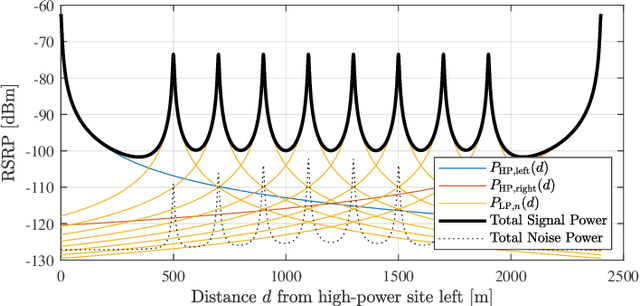
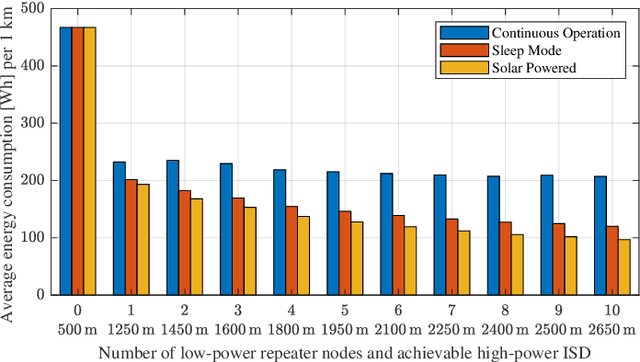
Abstract:Modern trains act as Faraday cages making it challenging to provide high cellular data capacities to passengers. A solution is the deployment of linear cells along railway tracks, forming a cellular corridor. To provide a sufficiently high data capacity, many cell sites need to be installed at regular distances. However, such cellular corridors with high power sites in short distance intervals are not sustainable due to the infrastructure power consumption. To render railway connectivity more sustainable, we propose to deploy fewer high-power radio units with intermediate low-power support repeater nodes. We show that these repeaters consume only 5 % of the energy of a regular cell site and help to maintain the same data capacity in the trains. In a further step, we introduce a sleep mode for the repeater nodes that enables autonomous solar powering and even eases installation because no cables to the relays are needed.
Adding Indoor Capacity Without Fiber Backhaul: A mmWave Bridge Prototype
May 14, 2021
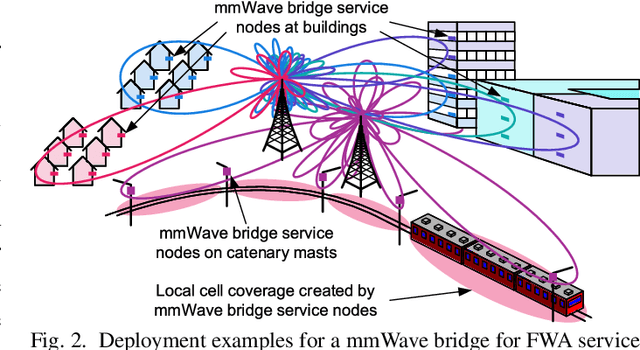
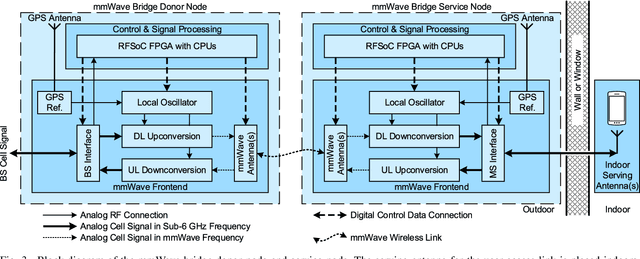
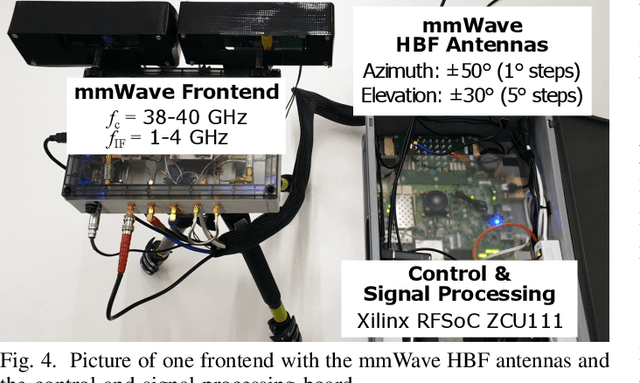
Abstract:Today, a large portion of the mobile data traffic is consumed behind the shielding walls of buildings or in the Faraday cage of trains. This renders cellular network coverage from outdoor cell sites difficult. Indoor small cells and distributed antennas along train tracks are often considered as a solution, but the cost and the need for optical fiber backhaul are often prohibitive. To alleviate this issue, we describe an out-of-band repeater that converts a sub-6 GHz cell signal from a small cell installed at a cell tower to a mmWave frequency for the fronthaul to buildings or distributed antenna sites, where the signal is downconverted to the original frequency and emitted for example inside a building. This concept does not require fiber deployment, provides backward compatibility to equipment already in use, and additional indoor capacity is gained while outdoor networks are offloaded. The architecture and hardware prototype implementation are described, and measurements are reported to demonstrate the functionality and compatibility with commercial infrastructure and mobile terminals.
Delivering Gigabit Capacities to Passenger Trains Tales from an Operator on the Road to 5G
May 14, 2021
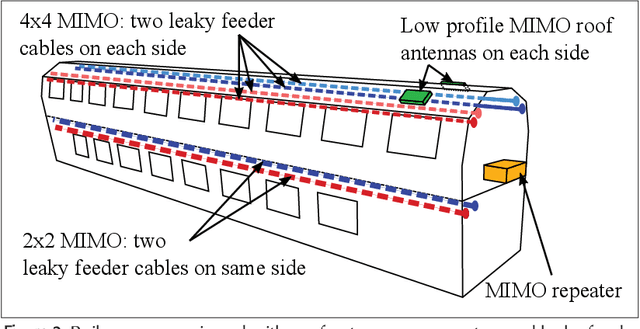
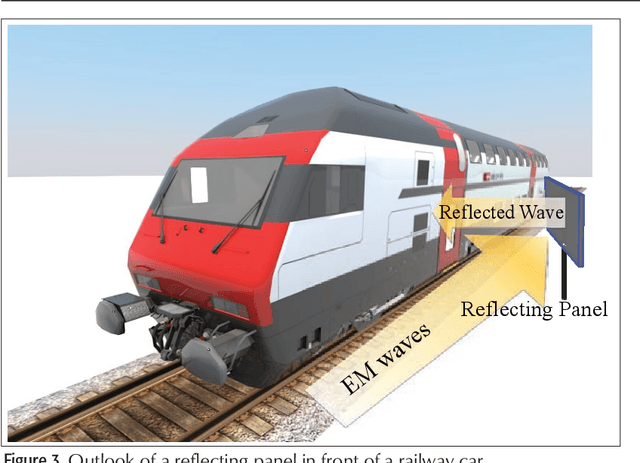
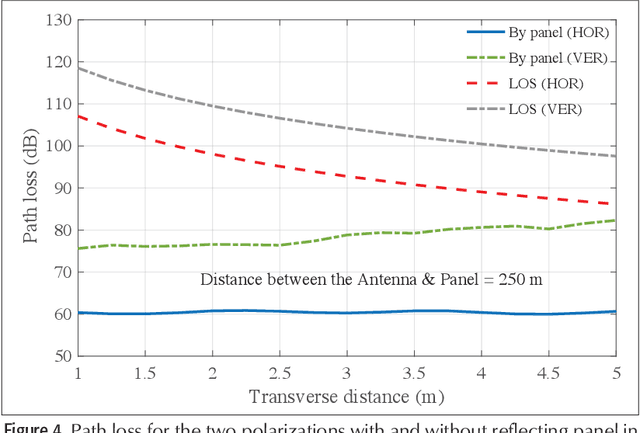
Abstract:Delivering reliable and high-capacity Internet connectivity to high-speed train users is a challenge. Modern railway cars act as Faraday cages and a typical train consist comprises several hundreds of users moving at high velocity. Furthermore, with the global availability of fourth generation (4G) Long Term Evolution (LTE), user expectations have dramatically increased: it is expected to be online anytime and anywhere. Demand for mobile high-capacity is being driven by video and music streaming services, for lower latency and higher availability by gaming, and for more reliability and even uplink capacity by mission critical applications. Finally, the life-cycle of the railway industry is much longer than for telecommunications, which makes supporting 5G challenging. In this paper, we survey the challenges associated with delivering high-capacity connectivity to train users, describe potential options, and highlight how a leading western European operator is tackling these challenges and preparing for 5G and beyond.
* Published in IEEE Communications Magazine (Volume: 57, Issue: 9, September 2019)
3.5 GHz Coverage Assessment with a 5G Testbed
May 14, 2021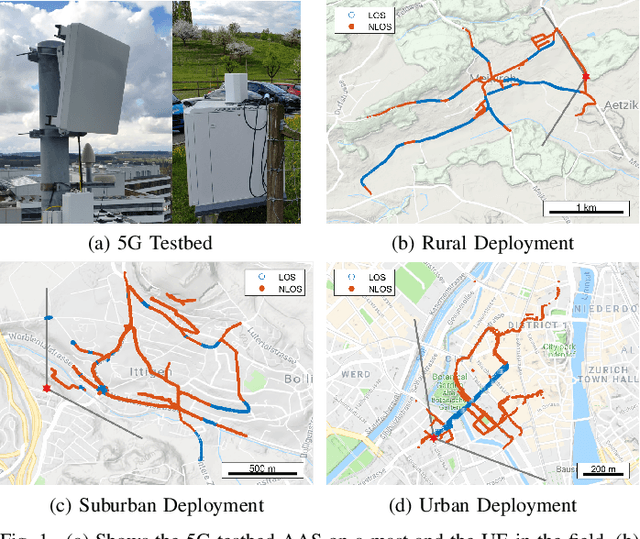
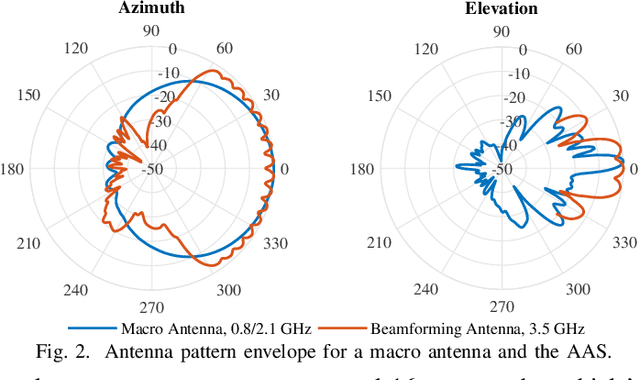
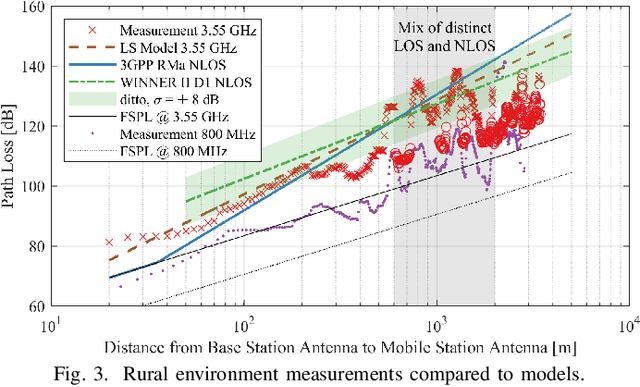
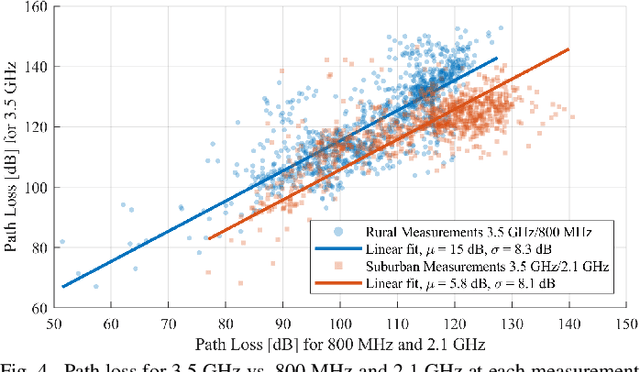
Abstract:Today, cellular networks have saturated frequencies below 3\,GHz. Because of increasing capacity requirements, 5th generation (5G) mobile networks target the 3.5\,GHz band (3.4 to 3.8\,GHz). Despite its expected wide usage, there is little empirical path loss data and mobile radio network planning experience for the 3.5\,GHz band available. This paper presents the results of rural, suburban, and urban measurement campaigns using a pre-standard 5G prototype testbed operating at 3.5\,GHz, with outdoor as well as outdoor-to-indoor scenarios. Based on the measurement results, path loss models are evaluated, which are essential for network planning.
* Published at 2019 IEEE 89th Vehicular Technology Conference (VTC2019-Spring)
 Add to Chrome
Add to Chrome Add to Firefox
Add to Firefox Add to Edge
Add to Edge